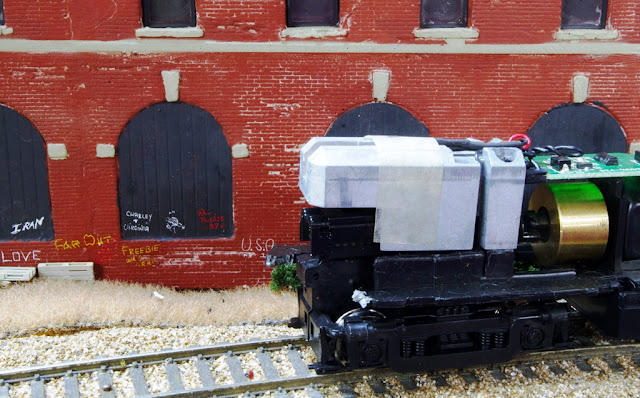Recently I saw a Lehigh Valley RS-3 on eBay. I paid maybe a $10-20 premium for it in the first place, since it was a road name I liked, especially since I'm now a big Mike Bednar fan. Once I got it and opened the box, it had -- you guessed it -- zinc pest. The frame behind the couplers had expanded and pushed the steps out and up:
Below is a closer view. I'm not sure how the seller concealed this from the condition photo in the listing, but he did. On the other hand, his response if I'd complained would simply have been to tell me to return the loco, and I wanted the roadname. Who knows if an LV loco would ever come back on eBay, and if it did, how much would it be?Lately I'd been looking at how to fix the zinc pest with my other RS-3s in that batch, and I'd already ordered a replacement frame from Atlas, so this would be a good test case. The new frame would cost money in addition to the premium I'd already paid, but it is what it is, I wanted this loco.
As soon as I took the shell off, the frame began to disintegrate. Here the coupler mount simply fell off one end:
The frame was just bowed up on the other end, but I've already found that if you just try to straighten it, it will disintegrate.
By the time I removed the motor, trucks, PC board, and weights, the frame had mostly disintegrated. This was all that was left: Here I've begun reassembly onto the new frame: And here things are back together, including a Digitrax DH165A0 decoder to replace the factory board. The only good thing here is that it's a fair amount of work to replace the PC board even on an RS-3 with a good frame, so at least the work here isn't completely wasted. And here's LV 215, ready to show up in a Pechulis Media DVD! I have about four more RS-3s to do this on, but at least I've now worked out how to fix them.







That's a great story and work you did on the engine. Didn't know the Atlas engine you showed had so many issues. The LV Cornell Red is a great paint scheme. Glad you fixed it and will enjoy it for years to come!
ReplyDeleteThe dreaded zinc pest strikes again. Having dealt with the issue myself for several years I applaud your determination, efforts and workmanship in getting these engines restored. I'll keep my eyes open for the LV 215 in the Rail fanning with the Bednar's series!
ReplyDelete